It may appear white from the outside, but the inside of hangar F-210 at Embraer’s Ozires Silva complex in São José dos Campos is very green. Environmentally green. The building is where we paint aircraft before they get their wings.
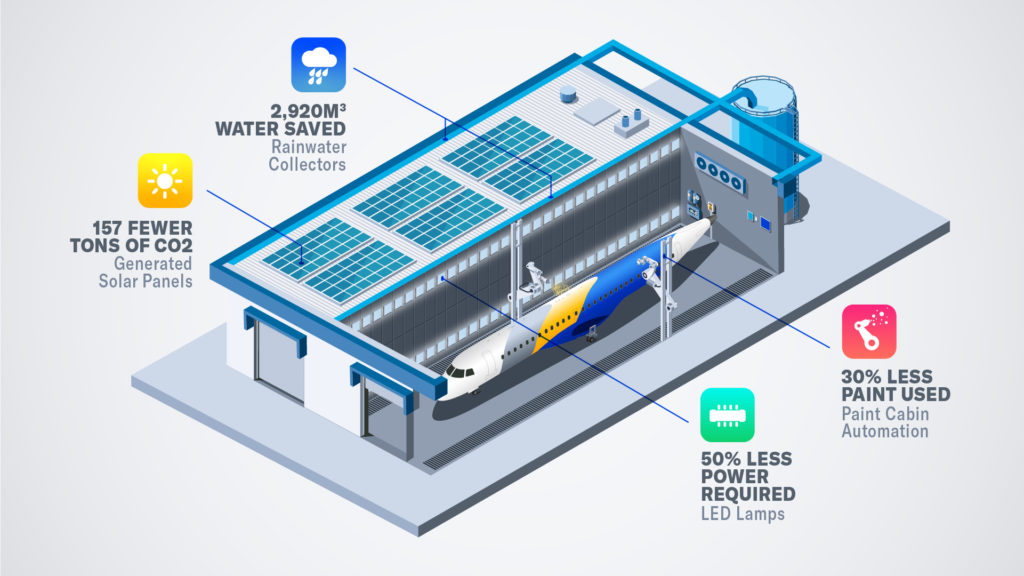
Over the last three years, we’ve made the hangar more sustainable so that it uses less energy, reduces waste and toxic emissions, and saves money. The improvements are in four areas.
Powered by the Sun
Our Sustainable Hangar now has 964 solar panels covering 2,791m2 that generate enough electricity per year to power 40 homes. The new panels save 360 MWh of power and 157 tons of CO2 annually, emissions that would have been produced from energy generated by the other systems. Annual operating costs are about US$38,000 lower.
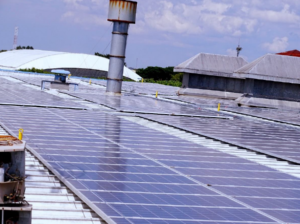
The photovoltaic panels are extremely durable and will last for more than 30 years.
Saving Precious Water
Hangar F-210 has a 20m3 water reservoir to treat atmospheric emissions that are a biproduct of the painting process. Rather than sourcing all water from a supply line, we installed a tank that collects rainwater.
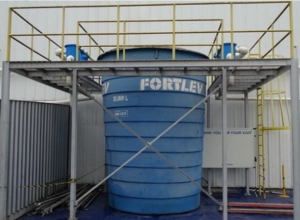
The new tank reduces water consumption by 2,920m3 every year.
Changing the Light Bulbs
Hangar lighting now uses more durable, energy-efficient and brighter LED lamps. Compared to the previous fluorescent bulbs, they require 49% less power and save 32,256 kWh and 2.7 tons of CO2 annually. LED lights save money, too. They last 4 times longer than fluorescent lamps (10 years vs. 2.5 years).
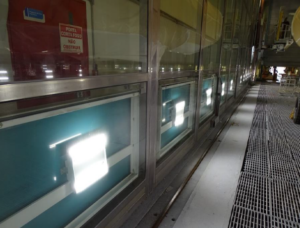
LED lamps require half the energy (6.6 kW) of fluorescent lamps (13 kW).
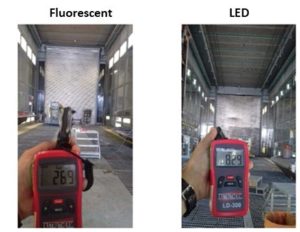
With LED lamps, the paint chamber is now 3 times brighter (829 lux vs. 269 lux.)
Improving Automation
Since we introduced new self-controlled software, we’ve cut the quantity of paint used by 30% and emissions of volatile organic compounds by 15%. Teams from product development, manufacturing engineering, industrial automation, and suppliers made the painting process more exact so there is less waste and lower cost. The finished paint quality, however, is even better than before.
Meeting of the Minds
The success of the Sustainable Hangar project is thanks to collaboration from firefighters, company experts in infrastructure, production, environment, ergonomics, maintenance, and the commercial group. The results are so impressive (they earned Embraer an Environmental Merit Awards Honorable Mention from Brazil’s Federation of Industries) that the company expects to adopt similar green improvements at other hangars.

